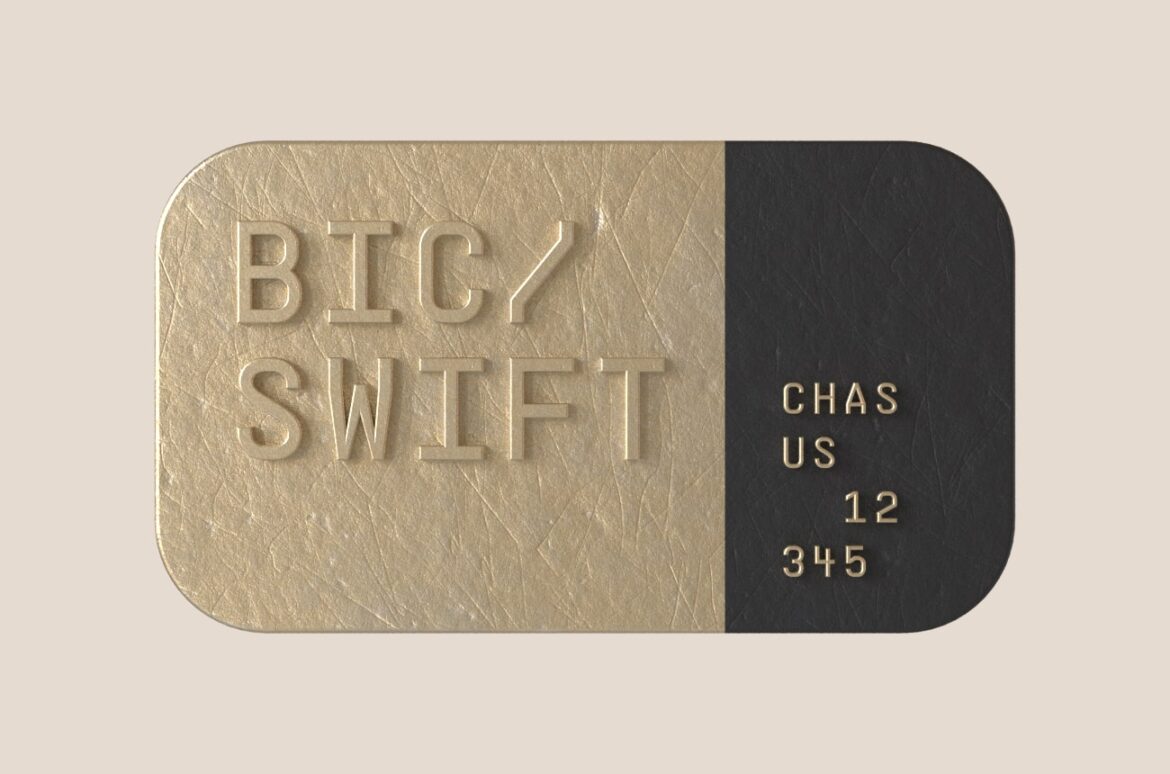186
What a BIC is can be explained in simple terms. BIC is the abbreviation for “Business Identifier Code.” It is a standardized international bank code that facilitates payments.
What the BIC is: Simply explained
The Business Identifier Code (BIC) is the internationally standardized identification code for financial institutions according to ISO 9362, primarily for cross-border payments and financial messages. A BIC consists of 8 or 11 characters (bank code, country code, location code, optional branch code) and uniquely identifies a bank.
- The BIC is often referred to as the SWIFT code. This is because it is managed by the Society for Worldwide Interbank Financial Telecommunication (SWIFT).
- This code is primarily used to identify bank transfers and payments and to ensure that they are executed quickly and without errors. It is therefore used in many countries around the world as the standard identification number for banks and financial institutions.
- In the SEPA area, the IBAN is usually sufficient (the BIC is determined in the background), but outside SEPA, the BIC is often still required and is also used for other transactions and compliance purposes.
- A BIC consists of a four-digit bank identifier (letters), a two-digit country code, a two-digit location code, and optionally a three-digit branch code. Positions 9 to 11 are usually alphanumeric, such as “XXX.”
- Therefore, there is BIC8 (institution + location) and BIC11 (additional specific branch) – BIC11 routes payments more precisely, while BIC8 clearly identifies the bank at the location.
- The BIC is used to uniquely identify financial institutions in national and international payments and financial messages and to route transfers correctly via the SWIFT network.
- In SEPA transactions, customers usually no longer specify the BIC, but banks use it internally for routing, sender/recipient identification in ISO-20022/SWIFT messages, compliance checks, and master data reconciliation.
How to use the BIC
The BIC plays an important role, especially in international bank transfers and payments.
- If you want to send a transfer or other payment to a bank or financial institution abroad, you will usually need the BIC of the recipient bank.
- You can find your bank’s BIC on your bank statements, in your banking app or online banking, on the website (imprint/contact details), and in the official SWIFT BIC directory; it is also often printed on your bank card. If you are asked to make a transfer, the BIC will be provided in the payment details alongside the account number, IBAN, and purpose of payment.
- Avoid mistakes by checking that the country code and bank in the BIC match the IBAN (for BIC8, “XXX” is often the main branch). Do not use codes from forums or unofficial websites. Remember: In the SEPA area, the IBAN is usually sufficient; the bank determines the BIC internally.
- Be aware of phishing (only use official channels), check the recipient’s name and IBAN before sending (German banks now offer this as a check in online banking) and test international transfers with a small amount first; if necessary, clarify correspondent bank details, fee options (SHA/OUR/BEN), and value/cut-off times.

